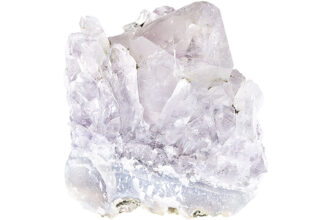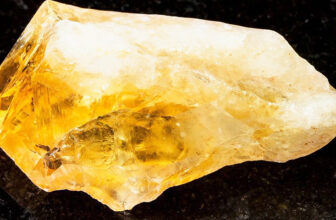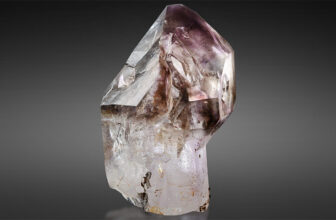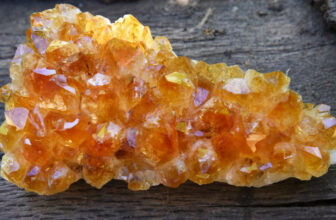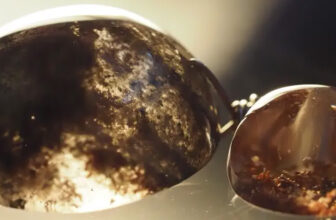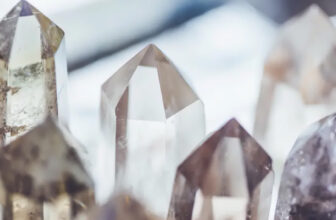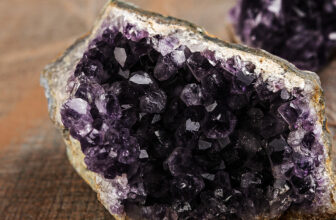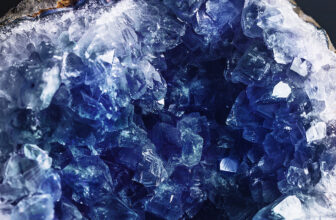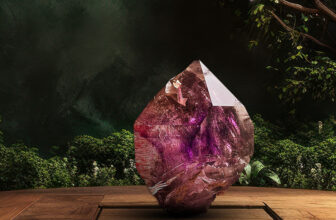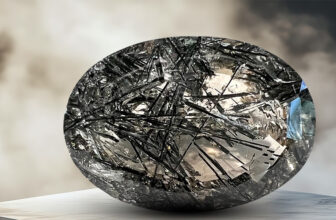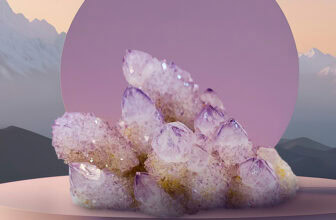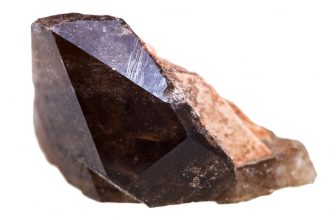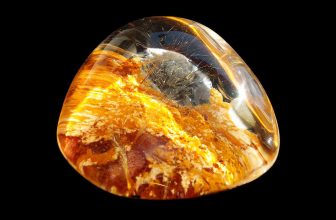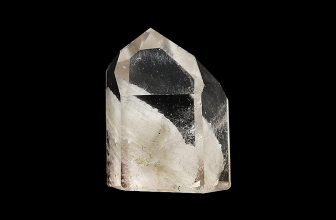Crystal Clusters
 Nature’s Networks of Light and Energy
Nature’s Networks of Light and Energy
Have you ever felt instantly calm when standing before a cluster of crystals, as if the room itself began to hum with quiet energy? That’s no coincidence. Crystal clusters – those mesmerizing formations of multiple crystal points growing together from a single base – are nature’s way of showing us what unity looks like in physical form. Each point shines individually, yet all share the same foundation, radiating energy outward like a miniature galaxy of light.
Their appearance is often breathtaking: hundreds of slender terminations branching out in all directions, catching light on every facet. Whether small enough to rest in your palm or large enough to anchor a room, clusters embody both harmony and expansion. They remind us that growth doesn’t have to happen alone – that collective energy, when aligned, becomes exponentially more powerful.
The word cluster comes from the Latin clostrum, meaning “a group” or “a bunch.” It’s fitting, isn’t it? These natural formations symbolize connection – the strength that emerges when individual forces combine into something greater. Spiritually, they’ve long represented unity, shared purpose, and amplified vibration. Each point may carry its own unique frequency, but together, they form a symphony of energy that supports balance and collaboration – both within and around us.
How Crystal Clusters Form
How does something so intricate, so perfectly aligned, emerge from the raw forces of the Earth? The answer lies in deep time and delicate balance. Crystal clusters form when multiple crystal points grow simultaneously from the same mineral source. Imagine a slow, silent bloom beneath the surface – minerals dissolved in water begin to precipitate, attaching to available surfaces and growing outward as environmental conditions allow.
Temperature shifts, pressure changes, and chemical saturation all influence their development. In an ideal environment – where mineral-rich solutions remain stable for long periods – several crystals can grow side by side, sharing nutrients from a single base. The result is a collective structure that seems almost intentional, as if nature itself understands the power of togetherness.
Clusters often develop in hydrothermal veins, geodes, or rock cavities, where mineral-rich fluids have space to flow and crystallize. Quartz, in particular, loves to cluster – hence the abundance of clear, smoky, and amethyst formations found worldwide. But clusters aren’t limited to quartz alone. Calcite, apophyllite, celestite, pyrite, and even aragonite can form dense groupings, each with its own architectural personality.
Some clusters grow tightly packed and compact – shimmering fortresses of crystalline light. Others form open, radiating structures that seem to reach out in every direction, like frozen bursts of energy. These differences depend largely on space: when room is limited, growth becomes denser; when open, the crystals stretch wide and free.
The Many Faces of Crystal Clusters
Walk into any crystal shop, and you’ll notice that no two clusters ever look quite the same. Some gleam like frosted glass, others sparkle with iridescent rainbows, and a few glow softly, like embers holding onto ancient warmth. That variety isn’t random – it’s a reflection of each mineral’s unique chemistry, birthplace, and growth conditions.
Quartz clusters are the most common and versatile. From clear quartz with its ice-like purity to smoky quartz with grounding earth tones, these clusters are beloved for their clarity and energy amplification. Amethyst clusters bring deep violet hues and are often used for protection and calm, while citrine clusters radiate golden warmth and are linked with joy and prosperity.
Then there are calcite clusters, which often appear translucent or honey-toned with rhombohedral points that catch the light like small mirrors. Apophyllite clusters shimmer with pyramid-like terminations, their surfaces so reflective they almost seem alive. Celestite clusters – delicate and sky-blue – exude tranquility, while pyrite clusters shine with metallic brilliance, often resembling miniature cities of gold.
Geography adds another layer of uniqueness. Brazilian clusters tend to be open and expansive, reflecting the vast quartz-rich veins beneath the country’s mountains. Indian apophyllite clusters are celebrated for their clarity and symmetry. Madagascar, Morocco, and Mexico each bring forth clusters with distinctive hues, densities, and textures – a reminder that the Earth’s palette is infinite.
Even the structure of a cluster tells its story. Radiating clusters grow outward from a central point, almost like solar flares of energy. Bed clusters form on flat bases, perfect for display or for anchoring energy grids. Interlocking clusters weave their terminations together in complex, almost architectural patterns – a stunning metaphor for how life’s complexities can still form harmony.
From Temples to Living Rooms
Long before crystal clusters found their way into our homes, they were revered as sacred objects in temples and ceremonial spaces. Ancient civilizations saw them not just as stones, but as embodiments of divine harmony – physical representations of the invisible forces that hold life together. In many traditions, clusters were placed on altars to channel cosmic light or to symbolize the unity between heaven and earth.
The Greeks and Romans used clusters in rituals and healing, believing that their radiating forms mirrored the spreading influence of the gods. In Eastern traditions, clusters were said to stabilize chi – the life force that flows through all things – making them powerful companions for meditation and energy balance.
Across cultures, one theme persisted: crystal clusters represented unity and collective strength. Just as each point supports the next, people looked to them as symbols of cooperation, family, and community. Even today, that symbolism resonates deeply.
The Metaphysical Power of Crystal Clusters
Have you ever wondered why one cluster can make a whole room feel different? The answer lies in the way energy moves through these formations. Unlike a single crystal point, a cluster disperses energy in multiple directions at once. Think of it as a lighthouse broadcasting light in all directions – each point amplifies the vibration of the others, creating a sphere of influence far greater than the sum of its parts.
Clusters are often associated with emotional and spiritual harmony. They encourage collaboration, openness, and connection, making them ideal for group meditations or shared spaces. Feeling tension in a room? Place a cluster nearby, and its multi-directional energy can help dissolve stagnant vibrations, inviting calm and cohesion.
Different minerals bring different energetic flavors. Amethyst clusters are renowned for their calming, protective qualities, perfect for reducing anxiety or promoting restful sleep. Clear quartz clusters act as universal amplifiers, clearing negative energy while boosting intentions. Citrine clusters radiate joy and abundance, encouraging optimism and manifesting opportunities. Smoky quartz clusters provide grounding, helping release emotional baggage while keeping you centered.
Hands-On Magic
Crystal clusters aren’t just for looking at – they’re for interacting with. One of the simplest ways to use a cluster is for charging and cleansing other crystals. Place smaller stones atop a cluster and let their energy align and refresh; the cluster’s multi-point structure ensures that energy flows evenly and efficiently.
In meditation, clusters can serve as powerful anchors. Center a cluster in a crystal grid or meditation circle, and notice how it draws focus, stabilizes energy, and encourages a shared sense of presence. Even just having a cluster on a desk or in a living space subtly encourages mindfulness and balance, reminding you of the strength found in unity.
Authenticity Matters
Not every cluster that catches the eye is a natural formation. In a market filled with synthetic or glued-together clusters, learning to recognize authenticity is essential – both for aesthetic appreciation and energetic effectiveness.
Natural clusters display cohesive growth patterns: each point emerges organically from the base, sharing the same mineral structure. You won’t see obvious glue lines or artificially attached points. Terminations may vary slightly – perfection is rare in nature – but the overall formation flows as a single unit.
Quality factors include:
- Clarity and luster: Transparent or translucent crystals should shine naturally, not appear polished or coated.
- Intact terminations: Broken or chipped points are normal in older or transported clusters, but a well-preserved cluster demonstrates careful handling and natural stability.
- Stable base: The foundation should support the points firmly without crumbling or containing filler materials.


